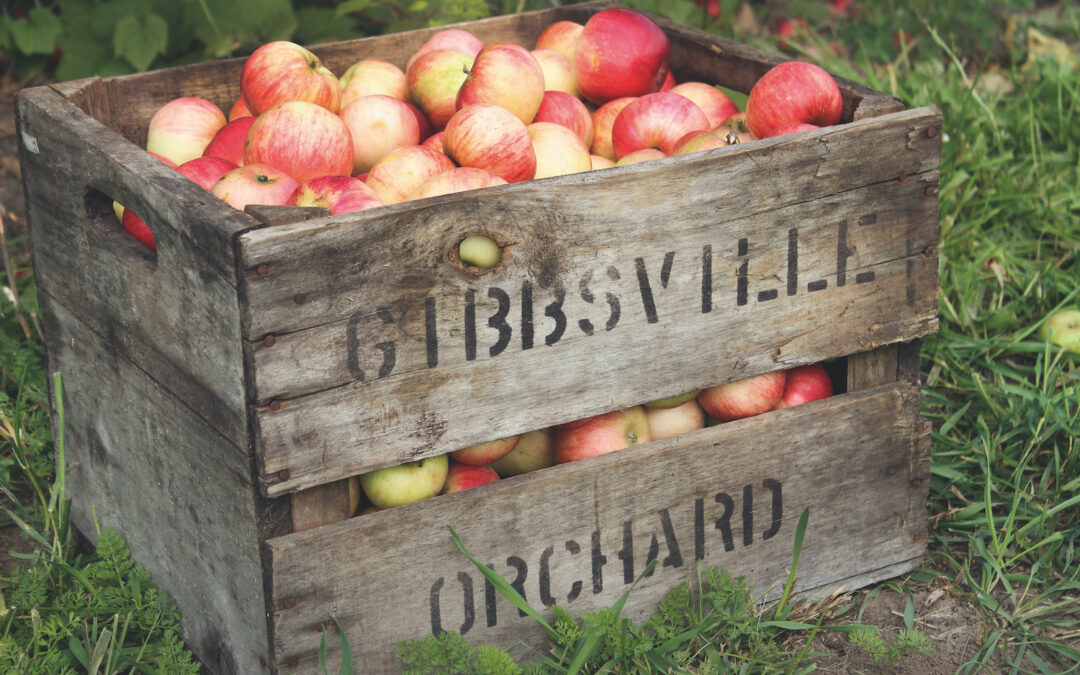There’s nothing more satisfying, tasty and healthy than picking and eating your own homegrown apples. And with pretty pink- tinged blossom in spring and glowing autumn fruit, an apple tree adds an attractive and romantic feel to a garden and is wonderful for wildlife too. Here’s what you need to know.
Apple trees can act as a focal point in a lawn or provide structure in borders. And because they’re grafted onto rootstocks producing different sized trees, there’s an apple tree to fit every garden. The most vigorous rootstocks, M111 and M25, make large standard trees to sit under, and are wonderful for wild orchards under planted with bulbs. However, even urban gardens can have an orchard if there’s room for five trees, argues author Naomi Slade in her excellent book An Orchard Odyssey, it just might mean using smaller trees such as semi dwarfing MM106. Otherwise M26, M9 and M27 make smaller trees still and can be trained and pruned into espaliers and fans, flat against a wall or fence, ideal for making the best use of space and maximising productivity.
Apples can also be grown in containers or trained into cordons – single stems with short side shoots – I’ve seen a row of these trained diagonally making an attractive and productive hedge. And step overs, cordons grown horizontally, around 45cm off the ground, are perfect for lining a path or edging a bed.
There are thousands of different apple varieties to choose from flowering and cropping at different times. It’s best to plant at least two apples from the same or adjacent groups (of which there are 6) so that they can pollinate each other. If there’s an apple tree in a neighbouring garden in the right group, that may even be enough.
Early varieties:
Discovery. A popular disease resistant red dessert apple
Sunrise. An early red apple and one of the best.
Worcester Pearmain. An early sweet red apple.
Mid season varieties:
Jupiter. Similar to Cox’s Orange Pippin but larger and redder in colour.
Lord Lambourne. A traditional English apple with crisp, juicy, sweet apples. Delicious!
Late varieties:
Blenheim Orange. A classic English heritage variety with a distinctive flavour.
Topaz. A crisp, sharp dessert apple with red flushed skin.
Braeburn. A popular sweet, crisp apple.
Elstar. One of the best modern apples with an excellent fruity flavour.
Spartan. A popular heavy cropping dark red dessert apple.
You can buy trees bare root between November and early March, or in containers for planting the rest of the year. Plant your tree in a warm position with free draining soil that gets around 6 hours of sun. Keep their bases weed free and mulch in the early years, and you’ll reap the rewards in years to come.
This article first appeared in the October issue of SE22 magazine.

